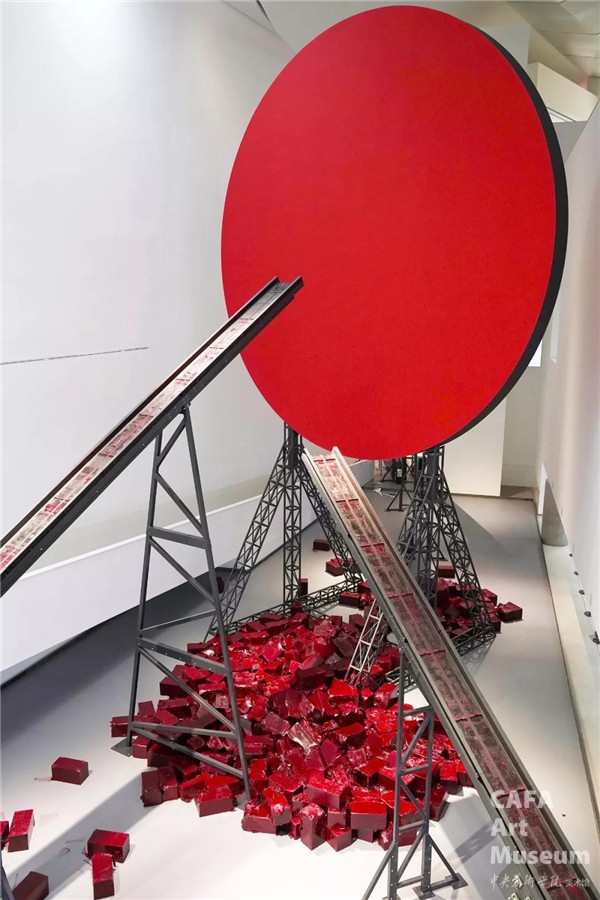

The internationally acclaimed artist Anish Kapoor’s first large-scale exhibition in Beijing presents an extraordinary art feast of dialogue and collision between the cultural concepts of the East and West. Previously, Chinese audience were more likely to experience the visual impact of his monumental works, which blend the spirit of the East and West and perfectly dissolve into the surrounding environment, in major international art museums and public space, such as Tate Modern’s Turbine Hall, Château de Versailles, Museum of Contemporary Art of Rome, London Olympic Games and Chicago’s Millennium Park. This time in Beijing, Kapoor’s works are exhibited simultaneously at CAFA Art Museum, which is imbued with the spirit of modern culture, and the Taimiao Art Museum, the most symbolic of Chinese culture. It is a rare opportunity for the Chinese audience to witness Kapoor’s in-depth exploration of material, form, technology, as well as Eastern and Western cultural content from a close distance.
Kapoor began to gain international attention in the 1980s when he attempted to create something immaterial, uncertain, swinging between material and non-material. His works employ simple form to imply the origin of life, and the high-purity visual effect reflects his unique understanding of nothingness. The classical concepts of material and space are constantly expanded and innovated by him, as he put it: “Every new work originates from the past works, and all ideas come from some previous thoughts.”
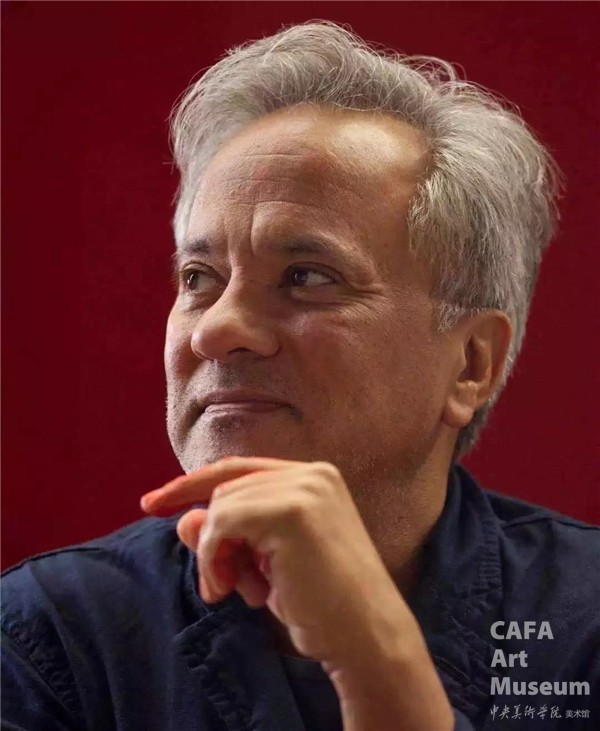
Anish Kapoor
In Kapoor’s works, allusions to ancient Greek myths, Christianity, Judaism, Buddhism and Hinduism are applied for interpretation. Kapoor has an Indian father and a Jewish mother, and he grew up in a Christian family in India. He went to Israel to study electrical engineering in his youth and then to the UK to study and live, and he later became a Buddhist. However, Kapoor does not set himself any cultural coordinates. He usually emphasizes that “I am only an artist based in the UK”, and he believes that different cultural forms indicate the same truth. Kapoor’s creation is built with his keen insight and based on his rich life experience. His multi-cultural experience naturally contributed to the unique artistic representation, and his works integrated Western culture and Eastern cosmology, revealing the combination and confrontation of different cultures.


My Red Homeland, exhibited at CAFAM
Kapoor has extraordinary mastery and sensibility of materials. No matter the volume of the work, he can give full play to the characteristics and potential of materials, instead of just taking them as the language of modeling. As early as 1981, Kapoor has said, “I don’t want to create sculptures about form, and I hope my sculptures can speak of faith, passion, and the exterior experience of materials.” For example, his use of wax. Because of its transparency and flexibility, wax has become a favorite material for many artists, such as Duchamp and Boyce. Kapoor gives bright colors to materials so that his works unleash some of the most authentic raw energy. He loves red in particular and mixes wax and red paint into special materials. “During the creation, pigments are distinguished from each other in a unique way, manifesting themselves alone.” For him, red is the color of the earth, the color of blood and body, while red wax is transformed into a metaphor and variation of blood and flesh, such as “My Red Homeland”. This work is driven by a robotic arm rotating circularly in an open container of 25 tons of red wax, and the texture of wax reminds the viewers of the touch of the skin. The bright red pigments are mixed with the semi-solid wax, and the red wax oil is rolled repeatedly in rotation, forming cycles of deep groove, as if the soil of life is constantly stirred and reformed.
Kapoor’s study and life in the West has injected some organic modernistic elements into his works, in which traces of minimalism (particularly the selection of materials) and Arte Povera can frequently be found. But he does not draw on the simplicity and absoluteness of minimalism, abandons its industrialized and rationalized characteristics and arouse the vitality and emotional factors of materials. The abstract geometric aesthetics mostly appears in a simple and rounded form, like the warm trail left by time that flows and narrates by itself.
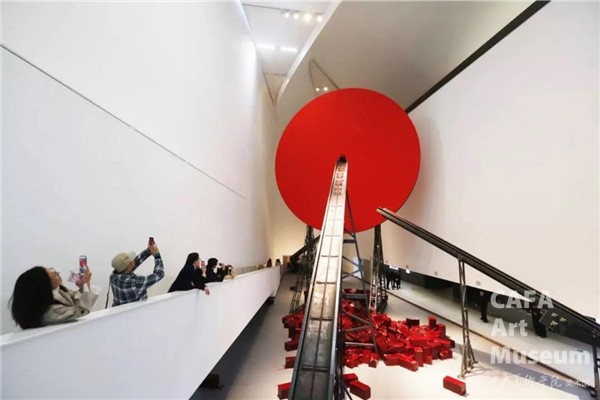
Symphony for a Beloved Sun, exhibited at CAFAM
The work “Symphony for a Beloved Sun”, exhibited at CAFA Art Museum this time, is a huge installation that takes up enough space. Red wax bricks are slowly raised by a conveyor belt until they reach the top tens of meters high, and then fall abruptly in front of a monumental red sun-disc object suspending over a heap of wax bricks. This dramatic and performative scene confronts and communicates with the space environment of CAFA Art Museum, in which the viewer can get a variety of thoughts and perceptions.
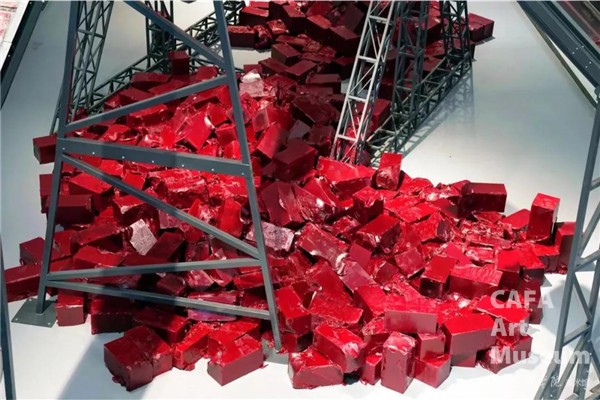
Symphony for a Beloved Sun, exhibited at CAFAM
In many of Kapoor’s works, antithesis has always been the theme he pursues unremittingly, such as material and non-material, existence and void, emptiness and fullness, and other metaphysical issues. This kind of exploration of binary oppositions and unity of things is also a way of caring for the world, embodying the world view of ancient Indian philosophy.
Kapoor is a master creator with great power. While people in today’s life are busy occupying time and exploring space, Kapoor’s works define a brand-new dimension of time and space. He keeps his works remained on-going, allowing time and space to develop freely. Through a special combination of optical illusion and material language, he breaks the limitation of time and space on his works, explores the ever-changing dynamic relationship between time and space, unlocks the great strength embedded in the works themselves, which offer the viewer a completely different perception from different moments and angles.
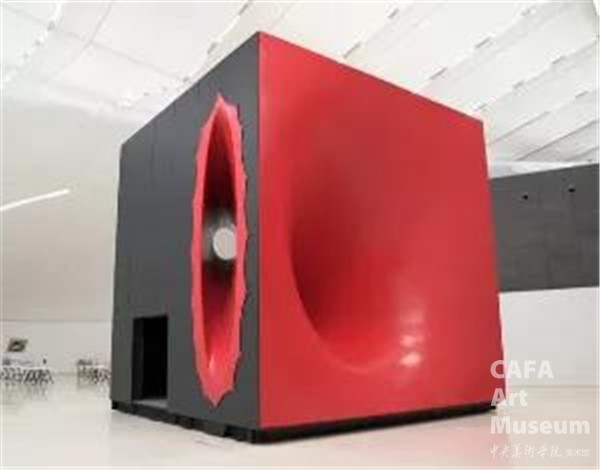
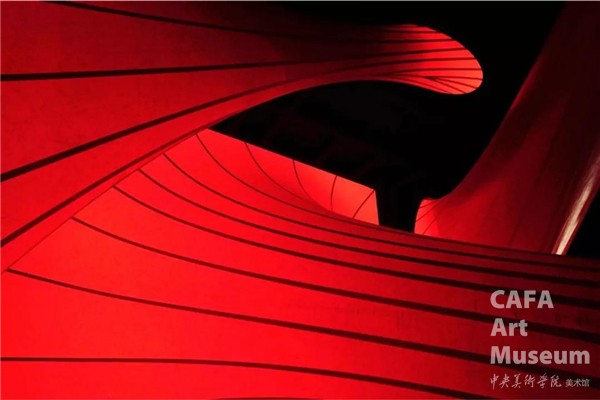
Sectional Body preparing for Monadic Singularity, exhibited at CAFAM
Kapoor believes that “Space is not voids. Space is a material. It is physical.” His works are beyond the category of sculpture in space construction, underlining the communication between and capacity of sculpture and the external environment. By overthrowing the viewer’s visual experience, the space contained in Kapoor’s work is made far larger than the space occupied, and this infinite internal space is more powerful than the external space. When the audience participate in the space construction, using their own bodies as the measurement scale, they judge the space and bring vitality to it, and jointly construct a mysterious phenomenon field and a strong sense of experience. However, “The mystical truth of art is time”. when the audience feel lost in front of the work and have to locate their position repeatedly, the whole world seems to be slowed down. The sense of imbalance brought by such a gigantic object and the immersive experience in the virtual space give people intense stimulation - a pure intuitive state. Indian philosophy attaches great importance to the exploration of truth between man and the universe, in which intuition is seen as the most direct and simple way of feeling the world. When “intuition” builds a bridge between the audience and the work, it can awaken the subconscious world of the audience, just as French philosopher Henri Bergson believes that only through intuition can people experience and grasp the “continuity” of life existence, the only truly ontological being. And continuity is “duration” on the psychological level, as the continuous time interweaves feelings of the past, present and future. It is also through this kind of feeling that Kapoor makes the audience feel compelled to experience the work intuitively and arouse the impulse of life, which is the universal will to create everything, just like the contemporary thinking shown in his work “Silent Time”.
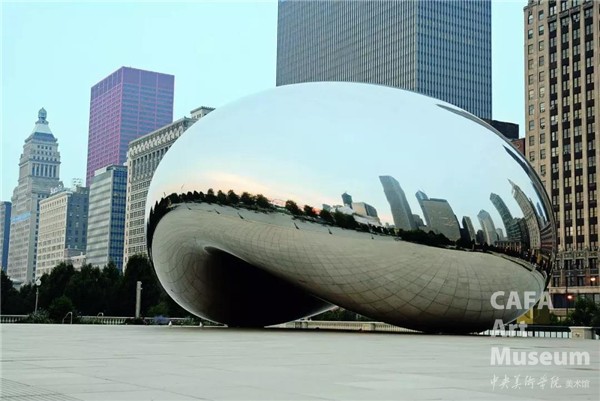
Cloud Gate
The use of stainless steel is also one of Kapoor’s masterpieces. He takes the transformation of the mirror, a common and everyday object, to the extreme. and the momentary appearance of visual images produces wonderful illusions in the projection. From the perspective of the phenomenology of perception, the normal and abnormal mirror surface establishes for the audience a perception field defined by Merleau-Ponty, in which the resonance of body or soul is surging. The reality of space and time seems to be absorbed and swallowed, and the distorted surrounding environment is like a living sculpture, while the audience are faced with a twisted or split image of themselves and have to deal with the unpredictable self and world as every step they walk brings a different scene. As Merleau-Ponty said, the world only shows one aspect to you – the individual’s vision is the individual’s world, but when these different worlds collide, there will be irreconcilable contradictions. Here, the audience’s body and life can be regarded as abstract brushstrokes, which in turn depict the inner picture of their own mental world. This non-material composition, spiritual exploration beyond the material level, and the striking perception of fictional subjects give people an impact of mind and visual confrontation. The empty form of the mirror surface also points to the nothingness of Buddhist philosophy. The grotesque images bring religion-like appeal to the body and soul and fully release the spiritual power of the works.
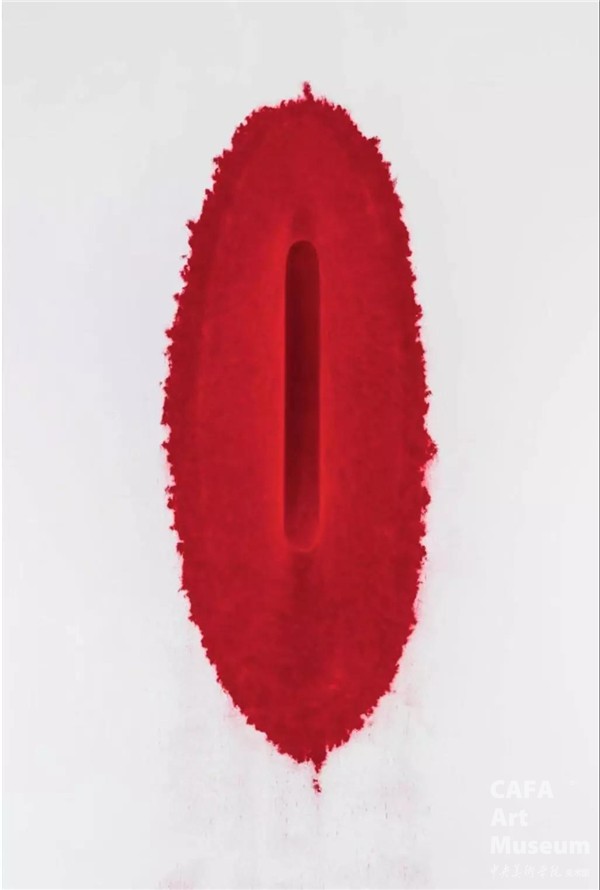
1000 Names
The infinite extension of the extraordinary artificial landscape and space created by Kapoor is an existence of nothingness in itself. His works do not express the artist’s personal experience or serve as the diagrammatic education for the audience, but “invite the audience to pursue together.” In the process of the audience exploring their own boundary of perception, both the physical and mental states are gradually changed. The variable visual experience enables the public to continuously discover themselves as well as new images of the environment, and probe the nature of all beings from the perspective of individual self-cognition. The audience seem to be drawn through the works by a mysterious force, injecting their inner emotion and understanding into the work and unconsciously joining in the construction of the work’s meaning. This exhibition will highlight Kapoor’s famous work “100 Names”, which applies Hindu mythology to suggest the work has extraordinary power to transcend its material. He considers that existence is born out of nothingness, and this nothingness has its own implication. He uses the nothingness to establish a connection between the audience and the work through thoughtful naming, making it more appealing and emotional. Here, the audience seem an integral part of the work. From the perspective of the theory of acceptance, the audience is also the producer of artworks, and can make the works more complete, as Kapoor explains with the concepts of Hinduism, “All of creation is set about by the relation of Shiva and Parvati.”
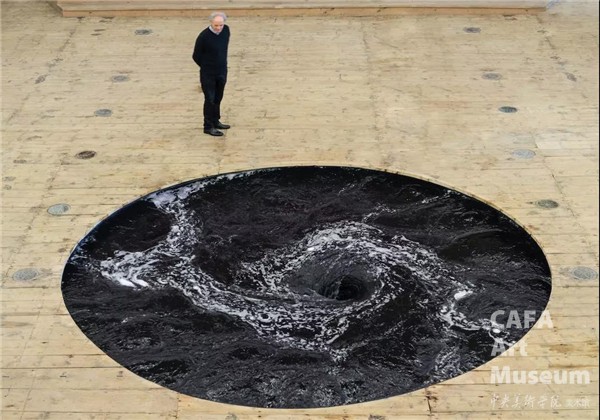
Descension
Kapoor’s work “Descension” was exhibited at Red Brick Art Museum in Beijing in 2018. The non-stopping spinning dark abyss is like an endless whirlpool of water rushing down, leading the audience’s consciousness to an unknown negative space, a space for self-realization. As early as 2006, Kapoor’s installation “Ascension” was displayed at the Galleria Continua Beijing and used a huge spiral channel to render the viewer a sensual experience of dematerialization and emptiness, which also attracted great attention.
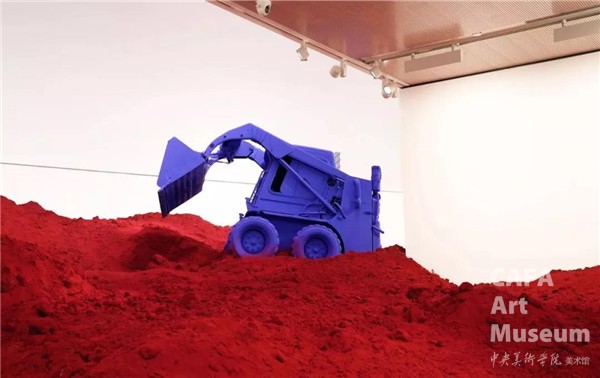
Destierro, exhibited at CAFAM
Kapoor remains sober-minded in the ambiguous identity, does not limit his creation by form or medium, makes every effort to seek the value and possibility of the art world and develops his distinct detached style. His sculptures and installations constantly break through and redefine phenomena and images, forms and state. His public artworks transcend simple materials and ascend into a realm of spiritual integration, allowing the audience to reflect on and explore the origin of life and its significance through self-knowledge and self-consciousness.
|Exhibition Photos|
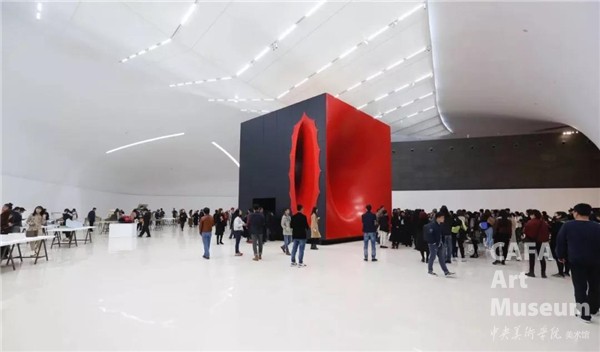
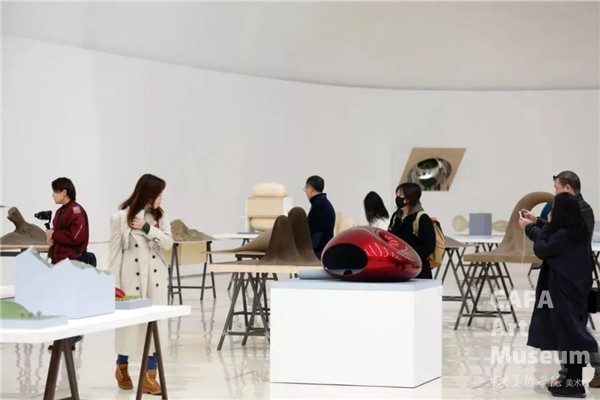
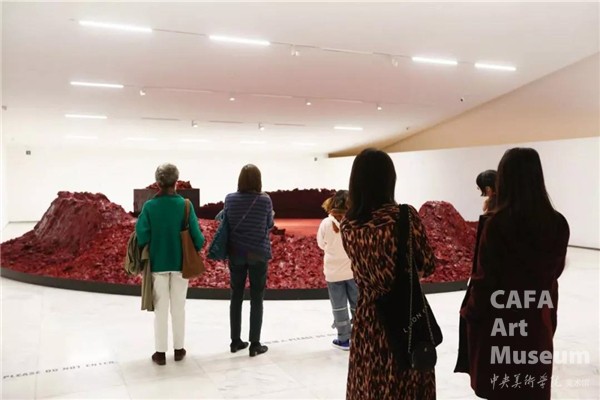
Chinese text edited by Wu Jing, translated by Li Yanjie
Photo by Li Biao
|About the Exhibition|
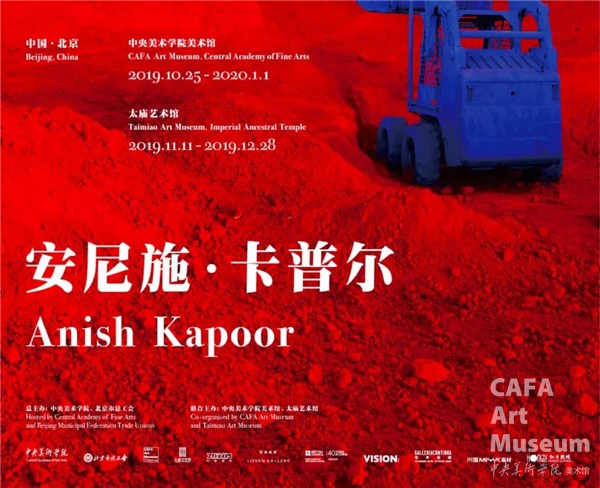
Academic Consultant: Fan Di'an
Artistic Director: Su Xinping
Curatorial Advisor: Hans Ulrich Obrist
Chief Curator: Zhang Zikang
Curators: Wang Chunchen Yue Jieqiong
Organizers: Central Academy of Fine Arts, Beijing Municipal Federation Trade Unions
Co-Organizers: CAFA Art Museum, Taimiao Art Museum
Chief Supporting Organization: Zhonghong Chuangyi (Beijing) Culture Development Co, Ltd.
Supporting Organizations: Lisson Gallery, Galleria Continua and the British Council
|CAFA Art Museum|
| Time |
2019/10/25 - 2020/1/1
Open to the public on 10/26
| Opening Hours |
Tuesday to Sunday 9:30-17:30
(Last admission 17:00)/ Closed on Monday
|Taimiao Art Museum|
| Time |
2019/11/11-12/28
| Opening Hours |
9:00-17:00 daily
(Last ticket purchase 16:30)
Ticketing Information
* All kinds of ticket can be used throughout the exhibition starting 10/26.

Scan the QR code to purchase ticket
Adult ticket: 120 yuan
Discount ticket: 60 yuan
(Please refer to discount ticket use policy below for eligibility)
Family ticket: 260 yuan
(2 adults and 1 child above 120 cm)
*Group ticket: Groups of 10 or more may enjoy 20% discount off original price.
Visitors with union membership card may enjoy 20% discount off original price.
(Group ticket only available at the CAFAM front desk)
For inquiries please call: 010-64771575
| Notes |
* The ticket of Anish Kapoor exhibition at CAFA Art Museum is 120 yuan. Visitors with union membership card may enjoy 20% discount off original price, and visit the Anish Kapoor exhibition at the Taimiao Art Museum for free. Visitors to Taimiao without card could buy the bell exhibition ticket for 15 yuan, and enjoy the Anish Kapoor exhibition for free. The east and west side halls of Xiang Dian are open for free. Visitors may enter with 2-yuan palace ticket.
* Teachers and students of CAFA, children under 120cm (adult company is required, and the adult needs to purchase ticket), elderlies above 60, military service men and disabled people may visit the exhibition for free.
* Students above 120cm (graduates students included), visitors with CAFA Alumni Card, CAFAM VIP Card, CAFAM Membership Card and Museum Association Membership Card, museum employees may purchase discount ticket.
Note: Free ticket and discount ticket can be purchased and verified upon showing credentials. CAFAM reserves the right for final explanation.
